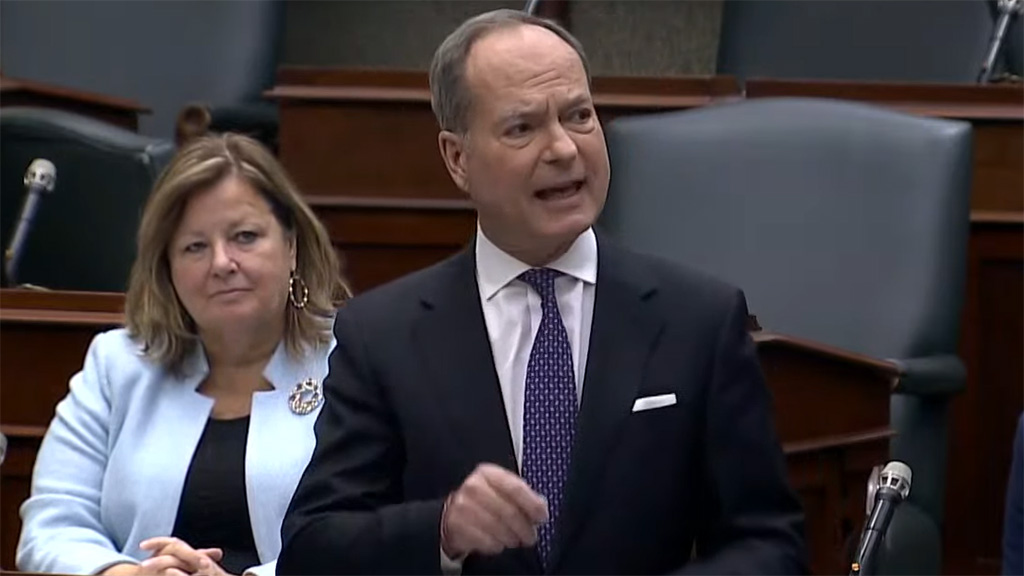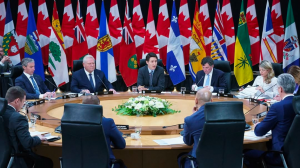Ontario Minister of Finance Peter Bethlenfalvy’s economic outlook released Nov. 14 forecasts a drop in the projected deficit, introduces a new “progress report” to highlight its multibillion-dollar construction plans and contains several measures to boost participation in the skilled trades.
“Together, we have come so far,” said Bethlenfalvy. “From attracting investments and good jobs to training thousands of skilled trades workers and helping keep costs down for families, we have made significant progress.”
In what was otherwise mainly a review of the past half-year of fiscal and project announcements, Bethlenfalvy noted the government had already provided training support to help 393,000 Ontarians advance towards in-demand industries and was expanding its efforts, pledging to spend an additional $40 million in 2022–23 on the latest round of funding in the Skills Development Fund.
Another skills plank was a plan to allocate an additional $4.8 million over two years to expand the Dual Credit program, encouraging more secondary school students to enter a career in the skilled trades or in early childhood education. This will allow an additional 800 secondary students to pursue dual credits in 2023–24, including 400 in technological education and 400 in Level 1 Apprenticeship programs.
We cannot lose sight of the fact that up to a third of skilled trades in construction are nearing retirement,
— Grant Cameron
Residential Construction Council of Ontario
Another 1,000 will be able to participate the following year.
“This gives students the opportunity to complete credits for both the Ontario Secondary School Diploma and college credentials or certificates of apprenticeship so they begin work earlier,” Bethlenfalvy said.
The first two rounds of the Skills Development Fund included 388 training projects. As of June 2022, there are 10,689 active apprentices who have completed an Ontario Youth Apprenticeship Program.
“We cannot lose sight of the fact that up to a third of skilled trades in construction are nearing retirement and reports suggest that 100,000 skilled workers are needed to meet the government’s commitment to build 1.5 million more homes by 2030,” said Residential Construction Council of Ontario senior director of public affairs Grant Cameron in a statement. “The residential construction industry contributes more than $66 billion to Ontario’s economy so we need to ensure we have enough new people coming into the industry.”
Ian Howcroft, CEO of Skills Ontario, added, “We are pleased to see that the Ontario government is continuing to place strong focus on skilled trades and tech careers which will continue to show strong demand.”
Further to the skilled trades expansion is the inclusion of other apprenticeship Training Delivery Agents (TDA) in addition to colleges in the delivery of Level 1 Apprenticeship Dual Credit programs. Eight non-college TDAs will be included in 2023–24.
Current housing initiatives such as the government’s plan to revise Greenbelt legislation were absent from the minister’s speech. The word “housing” was mentioned only once.
The government is now projecting a $12.9-billion deficit in 2022–23, nearly $7 billion lower than the projection published in the 2022 budget.
Looking ahead, the Doug Ford government projects declining deficits of $8.1 billion in 2023–24 and $0.7 billion in 2024–25.
Ontario’s real GDP is projected to rise 2.6 per cent in 2022, 0.5 per cent in 2023, 1.6 per cent in 2024 and 2.1 per cent in 2025. Compared to the spring budget, the government now expects slower growth in real GDP from 2022 to 2024, and higher job creation in 2022 but lower job growth in 2023 and 2024.
Targeting businesses, the government will launch of a voluntary clean energy credit registry, intended to boost competitiveness while giving businesses flexibility in how they pursue environmental and sustainability goals, Bethlenfalvy explained.
The government will also provide small businesses with $185 million in income tax relief over the next three years, benefiting about 5,500 small businesses through the proposed extension of the phase-out of the small business tax rate.
The new Building Ontario Progress Report does not appear to outline new project spending programs but rather sums up recent initiatives.
Among them, the finance minister said, the government has:
- attracted $2.5 billion in investments over the past year to support low-carbon steel;
- extended its focus on critical minerals, advanced environmental assessment for the Ring of Fire and committed almost $1 billion for all-season roads to the Ring of Fire; and
- pledged to spend $25.1 billion on highway expansion and rehabilitation over the next 10 years, including building Highway 413 and the Bradford Bypass and expanding Highway 401.
Other spending highlighted included pledges for the electric vehicle supply chain, small modular reactors and expansion of the Pickering nuclear station, and support for the nascent hydrogen energy sector and small hydroelectric facilities.
“We’re making progress by getting shovels in the ground on critical projects all across Ontario,” said Bethlenfalvy.
The forecast reiterates planned spending of $61.6 in the next decade on transit projects, over $40 billion in that time on hospital infrastructure and $6.4 billion to build 58,000 new and upgraded long-term-care beds across the province by 2028.
“Ontario has made substantial progress on key transit and transportation projects that will provide significant improvements to Ontario’s transportation grid,” said Nadia Todorova, executive director of Residential and Civil Construction Alliance of Ontario, in a release. “This continued focus and follow through are critical to Ontario’s future.”
Follow the author on Twitter @DonWall_DCN.











Recent Comments
comments for this post are closed